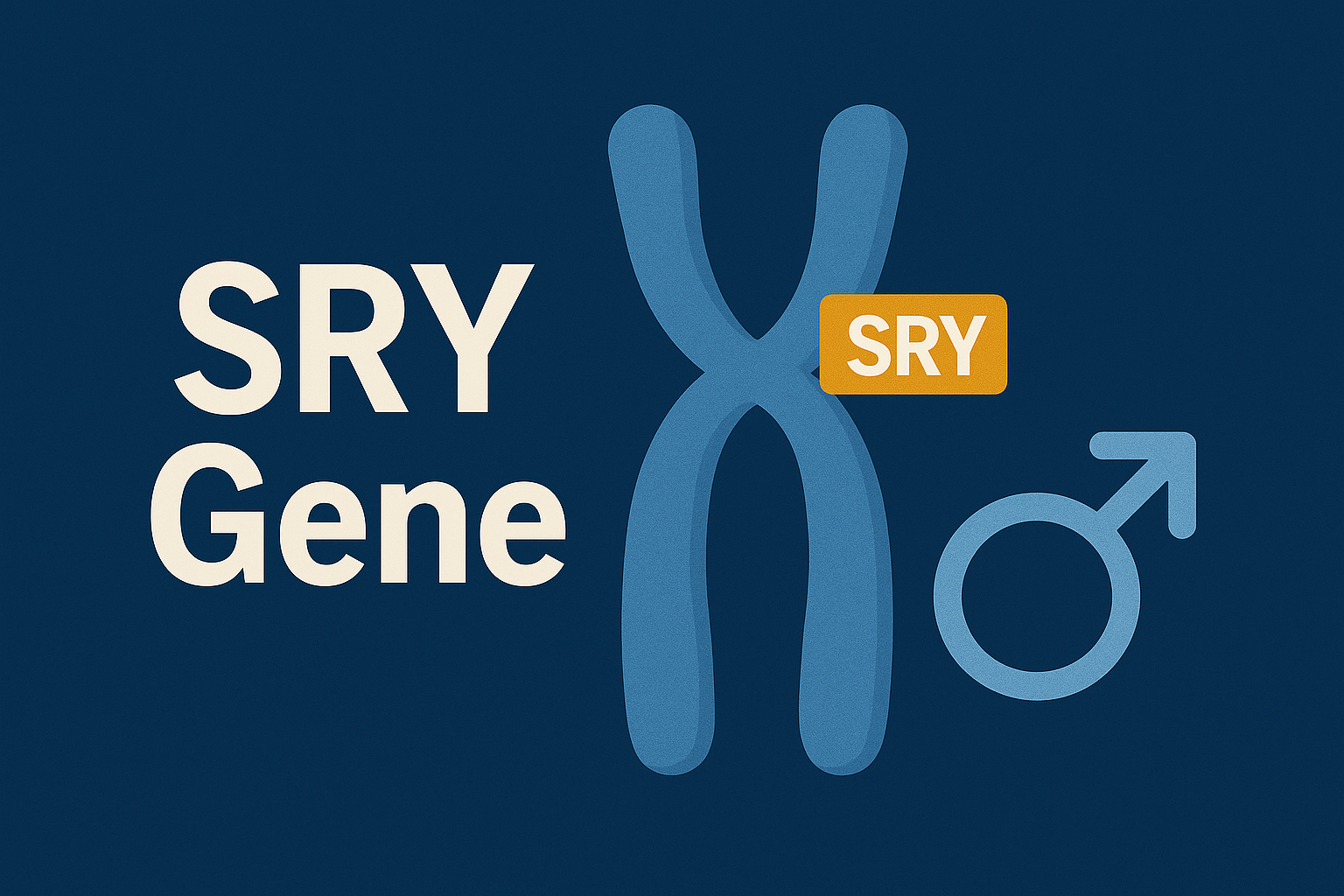Summary: What is the SRY Gene?
- Full Name: Sex-determining Region Y gene.
- Location: Found on the Y chromosome (in most mammals, including humans).
- Function: Acts as the primary genetic trigger for male sex determination during embryonic development.
One of the most intriguing biological questions – “Will the baby be a boy or a girl?” – is largely answered by a small but powerful gene known as SRY (Sex-determining Region on the Y chromosome). Located on the Y chromosome, this gene acts like a master switch that initiates the pathway for male development in mammals, including humans.
The Role of SRY in Sex Determination
At conception, an embryo inherits one X chromosome from the mother and either an X or Y from the father. If the Y chromosome is present, it typically carries the SRY gene, which activates male development by switching on other key genes like SOX9, leading to the formation of testes and the production of male hormones such as testosterone. In the absence of SRY, the embryo naturally follows the female development path.
When Biology Breaks the Rules: Exceptional Cases
While the presence of SRY almost always leads to male development, rare exceptions have surfaced. Recent reports from Italy and the U.S. in 2024 describe biological females carrying the SRY gene. In these cases, mutations had translocated SRY onto an X chromosome, but due to additional mutations that led to selective X inactivation, the SRY gene was silenced – allowing the individuals to develop as healthy females. These cases highlight not just the power, but also the precise regulation needed for SRY to function.
A Fading Future for the Y Chromosome?
Though essential, the Y chromosome is shrinking, having lost hundreds of genes over millions of years. Today, it retains only about 55 genes compared to the X chromosome’s 900. If the current trend continues, scientists predict the Y chromosome could disappear in 11 million years.
But nature has a backup plan. In Japan, the spiny rat has already lost its Y chromosome – and survived. It turns out, these rodents evolved a new sex-determining gene near the SOX9 gene on chromosome 3, allowing males to develop without SRY. This discovery, published in PNAS in 2022, gives hope that humans might also evolve a new master sex gene if SRY ever vanishes.
What It Means for Humanity
The discovery of SRY’s pivotal role, rare exceptions in female carriers, and examples from other species suggest that sex determination is more flexible and dynamic than we once thought. While the human Y chromosome may be fading, the evolution of alternative genetic switches like in spiny rats hints at a possible future where new mechanisms could take over – ensuring survival, though possibly leading to the rise of new human species with different sex-determination systems.
In essence, the SRY gene not only answers a timeless question about our beginnings but also opens a window into our evolutionary future.

